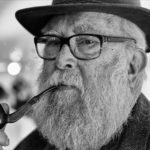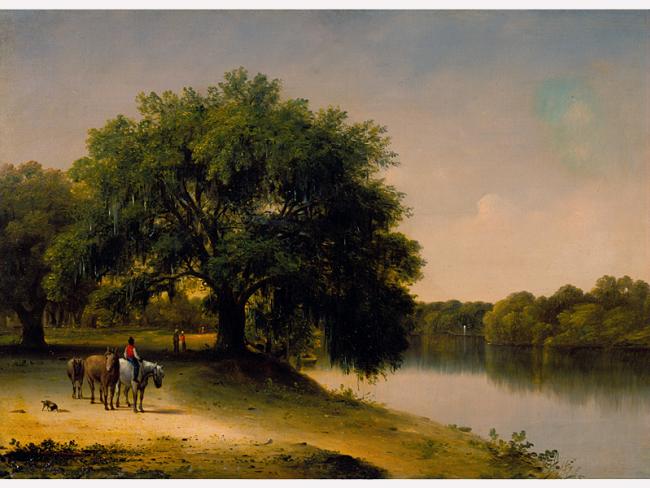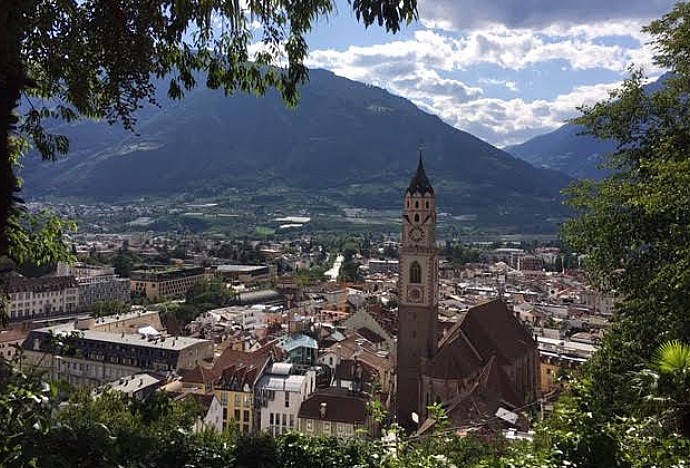THE PUPPETS ARE COMING! The puppets are coming. That’s the Piccadilly Puppets and they will be at the Lilburn Farmers Market on Friday, August 16, from 4-8 p.m. Enjoy their entertaining production while shopping for fresh items at the market.
TODAY’S FOCUS: New Phone Scam about Cancer Afoot, Again Targeting the Elderly
EEB PERSPECTIVE: GGC President Focuses on Students, Seeking Campus Filled with Joy
ANOTHER VIEW: Reflecting on Civil War Battles during the Heat at Manassas
SPOTLIGHT: Infinite Energy Center
FEEDBACK: It’s Not a Gun Problem That We Have, but a Culture Problem
UPCOMING: Aquatic Centers Have Extended Hours and Are Open until Labor Day
NOTABLE: Institute of Transportation Engineers Honors Duluth Resident
RECOMMENDED: Lazy Dog Café, in Peachtree Corners
GEORGIA TIDBIT: Some Works by Early Georgia Artists Still Hang in Museums in State
MYSTERY PHOTO: Mountain Town Is Mystery Photo for This Edition
LAGNIAPPE: Stunning Butterfly Photograph
CALENDAR: Puppets Coming This Friday to Lilburn Farmers Market
TODAY’S FOCUS
New phone scam about cancer afoot, again targeting the elderly
By Raleigh Perry
BUFORD, Ga. | In three days, I received several phone calls supposedly from Medicare. Its message is short, but not so sweet. What they told me in the call was that I had to have a physical exam to determine whether or not I had cancer and if I did not do that, Medicare would not pay for the treatments should I come down with cancer.
Like most of the calls of this nature, my telephone, which will give me the incoming call number and tell me who is calling, tells me that the caller is “Unavailable” and the number is local. These calls could be coming from other areas and, therefore, the calling number might not be a number local to the Atlanta area.
“For more information, press one (1).” That should be a key that something is wrong. Another key is that Medicare would not call you on an “unavailable” number if they were to call you at all. You would most certainly get a notification in the mail. That is simply the way that government and the Social Security Administration works.
The best thing that you could do is to JUST HANG UP! You can, if you want to, listen to the entire message, but certainly do not press the one (1) key on your phone for more information.
I am 77 years old and according to the DO NOT CALL LIST, I receive in abundance more calls than the average telephone user. That fact, and the general nature of the calls, tell me that virtually all of this type call is focused on the elderly. Elderly people would be afraid of losing their Medicare and the prompt to “Press ONE” would virtually certify you as elderly and a bit afraid of losing all, or any part, of your Medicare coverage.
Medicare is nothing more than a group health insurance policy for those over 65. You pay for this coverage. Every year you receive a letter from the Social Security Administration telling you how much you will receive each month the next year and how much of your Social Security monies will go to pay for the Medicare insurance. You are not about to lose that coverage regardless of what the caller says.
I emphasize my advice again. JUST HANG UP!
My wife will not even pick up the phone in our house, mainly because all of the people she will be wanting to talk to know her cell number. I, on the other hand, will always pick up the phone. At this point, I think I have to in order to keep the readers of my articles up to date on the new scams and their potential to mess up your life. I know that most “unavailable” numbers are scams, but I do have some callers that call for me and their name does not appear on the phone.
If I get a live scammer on the phone, however, I will play along with him to a certain extent – just for fun. I enjoy my life and I want you to also.
- Have a comment? Send to: elliott@brack.net
GGC president focuses on students, seeking campus filled with joy
By Elliott Brack
Editor and Publisher, GwinnettForum
AUG. 13, 2019 | Georgia Gwinnett College’s (GGC) third president, Dr. Jann Joseph, is dynamic and not bashful in her support of students, their achievement, and in particularly wanting her students to be even more successful over time. She came to GGC on July 1, after serving as executive vice chancellor for Academic Affairs, and then as interim chancellor of Indiana University – South Bend.
 After six weeks on the job now, she has found “No place so open and unapologetic to the idea of caring for students from different circumstances.” Her plans for GGC are to “Look deeply into underperforming students, and deliberately go about means to help them. We want to scale them up here at the college,” she says with energy. “These students come here to invest in their future, and we want to help them as much as we can.”
After six weeks on the job now, she has found “No place so open and unapologetic to the idea of caring for students from different circumstances.” Her plans for GGC are to “Look deeply into underperforming students, and deliberately go about means to help them. We want to scale them up here at the college,” she says with energy. “These students come here to invest in their future, and we want to help them as much as we can.”
While some GGC students leave college before graduation “near the national average,” she is not happy with that level of accomplishment. “Some leave GGC too early. What happened to cause them to leave? We must be more concentrated in our effort to retain students. We want to make them more successful over time.”
The new GGC president also wants students to “attend classes first, and take a full load, so that they can graduate as early as they can and be on the best road for their lives. The support and compassion of the college that I have seen here is second to none. We want to help our students invest in their future.”
In her short time in Gwinnett, Dr. Joseph has felt welcomed. “It is a nurturing and supportive campus. I see GGC caring for people with an expressed experience and purpose. There is good access by the staff to students.”
Dr. Joseph is a native of Trinidad, West Indies. She came to the United States in 1992 to join her husband (of 36 years of marriage, who died last year), when he was a student at the University of Wisconsin. She graduated from the University of the West Indies with both a bachelor’s and master’s degree. Her doctorate is from Wisconsin in curriculum and instruction in science education.
She tells a story of how her mother always wanted a clean house before inviting people in. At GGC, she says, “We have a clean house, the right space, all modern and the utmost best for successful students. We want to invite more in.”
She remembers it was her mother in law who wanted “to be mindful of what can be accomplished if you set goals for the future. We want to be measured favorably by others. And we will set measurable goals.”
 Dr. Joseph has three children, and four grandchildren. A son accompanied her on her initial visit to Gwinnett. He is in Information Technology, and was planning to move to the Austin, Texas area. However, he was impressed with the job opportunities he found in Metro Atlanta, and has moved his family here. Dr. Jann says: “They live eight minutes from me in Lawrenceville,” and that includes his wife, a teacher at Dyer Elementary, and three of her grandchildren.
Dr. Joseph has three children, and four grandchildren. A son accompanied her on her initial visit to Gwinnett. He is in Information Technology, and was planning to move to the Austin, Texas area. However, he was impressed with the job opportunities he found in Metro Atlanta, and has moved his family here. Dr. Jann says: “They live eight minutes from me in Lawrenceville,” and that includes his wife, a teacher at Dyer Elementary, and three of her grandchildren.
The new GGC wants a campus that is excellent, creative and works to serve its students and the community “We want it to be a happy campus and faculty, who have joy in their work. We will work to provide that support to achieve those goals.”
- Have a comment? Send to: elliott@brack.net
Reflecting on Civil War battles during the heat at Manassas
By Debra Houston, contributing columnist
LILBURN, Ga. | We booked into a B&B in Manassas Va. and no sooner had we unpacked, than a screaming train barreled through on tracks about 100 yards from our room. How fitting, I thought. When Lincoln needed a big battle to quash the Confederacy, Manassas, the rail junction 32 miles from Washington DC, was the hopeful place.
![]() He needed a general with fire in his gut and a plan in his head. Although Lincoln had held Brigadier General Irvin McDowell’s previous inactivity unacceptable, he liked the proposal the general finally drew up.
He needed a general with fire in his gut and a plan in his head. Although Lincoln had held Brigadier General Irvin McDowell’s previous inactivity unacceptable, he liked the proposal the general finally drew up.
Thirty thousand troops divided into three columns would face Confederate P.G.T. Beauregard’s troops on the rolling hills of Manassas (Bull Run). McDowell warned Lincoln his troops were green. “You are green, it’s true,” the president replied, “but they are green also. You are all green alike.”
The battle was set for July 8, 1861, but the soldiers didn’t have the appropriate meals in their haversacks. During the march, they broke rank and picked berries. Ammo and other supplies were slow coming. The battle finally commenced on July 21.
When we joined our tour guide on Henry House Hill recently, the heat index was 107 degrees. We were told: “You might feel cooler knowing the soldiers who fought here were dressed in wool.” I felt no cooler, but he continued: “The Civil War was the first rapid transit war. Our Revolutionary ancestors couldn’t move troops by rail. It was also the first war with rapid communication through the telegraph.”
We moved under another skimpy tree. “Where you’re standing now is the exact spot where a 19-year old soldier was bayoneted 17 times.” I studied the peach-fuzz on our 19-year old guide’s slim face. Surely those berry-picking soldiers were no longer green.
If you saw Ken Burns’ PBS documentary, you’ll recall the story of Judith Henry who was killed when a projectile fired through her home. You can photograph her house but not go inside. You may also recall that civilians had watched the battle from a high perch only to encounter the Union retreat. “Turn back!” the soldiers shouted. “We are whipped.”
The South lost almost 2,000 men (historian Shelby Foote), but the Union had lost more than 3,000. And that’s only First Manassas. The Second Battle of Manassas was fought August 29-30, 1862, on identical fields. About 14,000 Union soldiers were killed and wounded to the Confederate’s 8,000 killed and wounded. (Wikipedia)
Approximately 620,00 soldiers died in the Civil War from combat, accidents, starvation, and disease. So you see what happens when a nation divides and turns on itself. As they say, a word to the wise. But I’m not sure there’s any wisdom within our two parties today.
- Have a comment? Send to: elliott@brack.net
Infinite Energy Center
 The public spiritedness of our sponsors allows us to bring GwinnettForum to you at no cost to readers. Today’s underwriter is Infinite Energy Center, home to four distinct facilities in Duluth: Infinite Energy Arena, Infinite Energy Theater, Infinite Energy Forum, and The Jacqueline Casey Hudgens Center For Art and Learning. Infinite Energy Arena has had 16 years of tremendous success hosting countless concerts, family shows and sporting events, and is home to the ECHL’s Atlanta Gladiators and the NLL’s Georgia Swarm. Some past concerts include George Strait, Carrie Underwood, Beyoncé, Foo Fighters, Eric Clapton, Katy Perry, Kid Rock, James Taylor and Michael Bublé. Infinite Energy Arena also hosts many family shows including Cirque du Soleil, Disney On Ice and the Harlem Globetrotters. Infinite Energy Forum offers patrons the opportunity to host or attend a wide variety of events, from corporate meetings to trade shows to social occasions. Infinite Energy Theater has an intimate capacity of 708-seats and is home to many local events, family shows and even some comedians. The Hudgens Center For Art and Learning showcases a range of artwork throughout the year along with offering a wide range of fine art classes.
The public spiritedness of our sponsors allows us to bring GwinnettForum to you at no cost to readers. Today’s underwriter is Infinite Energy Center, home to four distinct facilities in Duluth: Infinite Energy Arena, Infinite Energy Theater, Infinite Energy Forum, and The Jacqueline Casey Hudgens Center For Art and Learning. Infinite Energy Arena has had 16 years of tremendous success hosting countless concerts, family shows and sporting events, and is home to the ECHL’s Atlanta Gladiators and the NLL’s Georgia Swarm. Some past concerts include George Strait, Carrie Underwood, Beyoncé, Foo Fighters, Eric Clapton, Katy Perry, Kid Rock, James Taylor and Michael Bublé. Infinite Energy Arena also hosts many family shows including Cirque du Soleil, Disney On Ice and the Harlem Globetrotters. Infinite Energy Forum offers patrons the opportunity to host or attend a wide variety of events, from corporate meetings to trade shows to social occasions. Infinite Energy Theater has an intimate capacity of 708-seats and is home to many local events, family shows and even some comedians. The Hudgens Center For Art and Learning showcases a range of artwork throughout the year along with offering a wide range of fine art classes.
- For further information, please visit www.InfiniteEnergyCenter.com.
- For a list of other sponsors of this forum, click here
It’s not a gun problem that we have, but a culture problem
Editor, the Forum:
![]() Mr. Bernard’s last comments remind me like shooting fish in a barrel…..
Mr. Bernard’s last comments remind me like shooting fish in a barrel…..
Jack, we don’t have a ”gun problem” in America. There are more guns than people in this country, and a healthy majority of the population are gun owners. That is a fact, and it’s been a fact for many, many years.
The reason the NRA and other gun lobbying groups are so effective is because the American people strongly identify with the individual’s right to self defense and self sufficiency that guns symbolize. That right is actually written into the Constitution, believe it or not.
We have had guns in this country since well before our founding, and the vast majority of gun owners would never consider murdering someone. I grew up with guns, as did both my daughters, and as will my grandchildren. Part of the culture of guns is a healthy respect for the destructive potential of a firearm and an even healthier respect for the rights of our fellow citizens.
We don’t have a gun problem, we have a culture problem. That culture which devalues human life and the long established rules of civil society is rotting the foundations of Western civilization. Until we address that situation, we are not going to see much improvement in the way we treat each other. We are told that anyone who disagrees with our tribe is evil, and that whatever happens to evil people is deserved. Tolerance, indeed!
— Rick Hammond, Lawrenceville
Suggests looking at gun problem from a much wider, global view
Editor, the Forum:
As usual, Mr. Bernard screams the liberal mantra relating to the high number of gun deaths in the U.S. Perhaps he needs to educate himself with a more global view.
First, the U.S. is not even in the top 100 countries for annual homicide rates when compared to the rest of the world according to the United Nations Office on Drugs and Crime.
Second, there is no strong connection between gun homicides and firearms ownership.(How many deaths have been attributed to NRA members?)
Third, there are a ton of Democrats taking money from the NRA–not just Republicans.
Fourth, there are multiple laws on the books already which are not being enforced. And criminals will get guns whether they are legal or not–just ask the drug cartels.
Then the U.S. has the highest rate of gun ownership at a rate of 112 guns per 100 civilians, The U.S. has 12 times the guns of Honduras, but 1/22nd the firearms related homicides.
All of this must lead to the conclusion that the U.S. needs to enforce the laws already on the books rather than stripping away more of the Constitution as it was originally intended.
— Roberta Cromlish, Stone Mountain
Send us your thoughts: We encourage you to send us your letters and thoughts on issues raised in GwinnettForum. Please limit comments to 300 words. We reserve the right to edit for clarity and length. Send feedback and letters to: elliott@brack.net
Aquatic centers have extended hours and are open until Labor Day
Though school is back in session, summer is not over yet! All Gwinnett County Parks and Recreation aquatic centers have extended and modified summer hours until Labor Day.
The seasonal leisure pools at Lenora Park and Rhodes Jordan Park will be open on weekends through September 2. Year-round aquatic centers will have special hours depending on location. The hours will continue throughout the school year with special extended hours at Bogan Park Aquatic Center and Bethesda Park Aquatic Center on days when school is out.
The leisure play pools offer lots of fun features, such as beach entry, water play structures, giant water slides and picnic areas. There are a wide-array of amenities for both fun and learning, including private, semi-private and group swim lessons.
The state-of-the-art award-winning aquatic centers also provide the perfect place to host birthday parties, team parties, family reunions, graduation parties and much more! Additionally, there are numerous pavilions, community rooms, activity buildings and special event facilities that can make the ideal location for any celebration.
Residents can purchase a year-round, seasonal or 10-visit FUNCARD valid at all Gwinnett County pools. All paying patrons (ages 18 and older), will be required to provide proof of residency in order to receive the Gwinnett resident rate. Gwinnett County residents have the option to purchase a Resident Passport as a convenient way to show proof of residency. FUNCARDS and Resident Passports can be purchased at all aquatic facilities and various gyms and community centers.
All pools are accessible for people with disabilities and offer safe and lifeguard staffed swimming places for patrons of all ages. For more details on facility rules, specific amenities and hours of operation, or information on facility rental, visit www.gwinnettparks.com.
Institute of Transportation Engineers honors Duluth resident
Marsha D. Anderson Bomar of Duluth, assistant general manager for Capital Program Delivery, MARTA, has been awarded the Theodore M. Matson Memorial Award from the Institute of Transportation Engineers (ITE). Before her current position, she was the executive director of the Gateway85 Community Improvement District (CID), the largest CID in the state of Georgia. Prior to the CID, she was the founder and president of Street Smarts, Inc., a planning, engineering, and design firm, and Data Smarts, a data collection and management firm, established in 1990, both of which she sold in 2010.
Marsha is an International Past President of ITE and is past Chair of ITE’s LeadershipITE program, Technical Council Design Department, Policy Committee, and Transportation Planning Council. She has been the Chair of the Goods Movement Council and author of the Urban Travel Characteristics chapter of the Transportation Planning Handbook.
Theodore M. Matson contributed greatly to the traveling public through the advancement of traffic engineering and the training of professionals. Mr. Matson was director of the Bureau of Highway Traffic at Yale University and was serving as vice president of ITE when his untimely death occurred in December 1954. He was one of ITE’s founders. The Theodore M. Matson Memorial Award, in recognition of outstanding contributions in the field of traffic engineering, has been awarded annually since 1957. The Institute of Transportation Engineers (ITE) is an international membership association of transportation professionals who work to improve safety and mobility for all transportation system users and help build smart and livable communities.
Through its products and services, ITE promotes professional development and career advancement for its members, supports and encourages education, identifies necessary research, develops technical resources including standards and recommended practices, develops public awareness programs, and serves as a conduit for the exchange of professional information. ITE develops the next generation of transportation professionals through its K–12 STEM program and its more than 150 student chapters.
Lazy Dog Café, in Peachtree Corners
![]() From Cindy Evans, Duluth | My husband and I just ate at the new Lazy Dog Café restaurant in Peachtree Corners. It is the California-based business’ first location to open in Georgia. Diners will feel like they’ve stepped into a mountain lodge when they enter. It had a fun atmosphere and we ate outside in the dog-friendly covered patio, which was nice. I ordered the bison burger ($15ish) which was very good with watermelon on the side. My husband got a bacon cheeseburger ($12ish ) with apple cider vinegar coleslaw, which he enjoyed. There was also an open face pie we talked about trying as well as wanting to sit around the large fire pit in the future. The menu was also especially artistic. Lazy Dog is open for lunch and dinner during the week and offers a separate weekend brunch menu.
From Cindy Evans, Duluth | My husband and I just ate at the new Lazy Dog Café restaurant in Peachtree Corners. It is the California-based business’ first location to open in Georgia. Diners will feel like they’ve stepped into a mountain lodge when they enter. It had a fun atmosphere and we ate outside in the dog-friendly covered patio, which was nice. I ordered the bison burger ($15ish) which was very good with watermelon on the side. My husband got a bacon cheeseburger ($12ish ) with apple cider vinegar coleslaw, which he enjoyed. There was also an open face pie we talked about trying as well as wanting to sit around the large fire pit in the future. The menu was also especially artistic. Lazy Dog is open for lunch and dinner during the week and offers a separate weekend brunch menu.
- An invitation: what books, restaurants, movies or web sites have you enjoyed recently? Send us your recent selection, along with a short paragraph (100 words) as to why you liked this, plus what you plan to visit or read next. Send to: elliott@brack.net
Some works by early Georgia artists still hang in museums in state
(Continued from previous edition)
George Cooke, best known for his portraits of southerners, was born in eastern Maryland in 1793. He first visited Georgia in the late spring of 1840, when he painted portraits in Augusta. He then spent the late summer and fall of that year sojourning through the north Georgia mountains, where he created landscape paintings featuring picturesque and sublime elements typical of the northeast’s Hudson River School.
One, Tallulah Falls (1841), is housed at the Georgia Museum of Art in Athens and depicts L’Eau d’Or, Tempesta, and Hurricane falls at Tallulah Falls, in the northeast Georgia mountains. He also rendered a companion painting, now lost, of Toccoa Falls.
The support of patrons in the antebellum years was not often earned via depictions of the landscape but by portraiture and scenes of everyday life. Besides George Cooke, other portrait painters in Georgia during the antebellum years included Benjamin Bynum; John O’Brien Inman, whose portrait of University of Georgia president Alonzo Church (1854) hangs in the Administration Building on campus; John Maier; and William Harrison Scarborough, among others.
Before the Civil War (1861-65), portraits of Georgians were executed in the studios of major towns, such as Savannah, or by itinerant painters traveling to places like Athens, Augusta, and Macon. Many itinerant painters of portraits, in oil or watercolor, featuring wealthy and middle-class Georgians remain unidentified.
The popularity of genre painting, or scenes of everyday life, continued in the United States during the Civil War and just after. William Aiken Walker, born in Charleston, S.C., was a successful itinerant painter who spent much of his career traveling in Georgia, Florida, Louisiana, Maryland, North Carolina, and South Carolina. After serving in the Confederate army during the Civil War, Walker turned his artistic energies to imaging the landscape and everyday life of the South during Reconstruction. Many of his paintings were executed on a small scale, making them easily portable and inexpensive. Several of his city and river scenes were published as lithographs for Currier and Ives.
His Plantation Portrait (1885), housed at the Morris Museum of Art, is typical in its horizontal format, the use of African American sharecroppers and workers in the foreground, a middle ground of a cotton field, and a background of outbuildings, steamboats, and a river. In other paintings, Walker portrays market and wharf views, with African American dock workers, newsboys, and vendors.
In the years after the Civil War, some American painters, including William Michael Harnett and John Peto, made careers for themselves by producing ultra-realistic, or trompe l’oeil, paintings. Often creating still-life images, these artists designed paintings to trick the eye of the viewer with emphasis on three-dimensional qualities, especially texture and shadows, everyday objects, and humor.
Working in Georgia for much of his artistic career, Hal Alexander Courtney Morrison was a native Canadian who attended Harvard Medical School in Cambridge, Mass. While living in Atlanta, Morrison decided to teach art, and he became best known for his still-life images, especially fish and game compositions. He also created scenes of cotton plantations and painted the portrait of Joseph M. Terrell, the governor of Georgia from 1902 to 1907, which is today part of the collection at the courthouse in Meriwether County. His Hanging Game: Wood Duck and Mallard (ca. 1890), housed at the Charleston Renaissance Gallery in Charleston, South Carolina, is typical of Morrison’s interest in still-life imagery.
(To be continued)
- To view the Georgia Encyclopedia online, go to http://www.georgiaencyclopedia.org
Mountain town is Mystery Photo for this edition
Check out this obvious mountain town as today’s Mystery Photo. Send your idea of where it is to elliottt@brack.net, and be sure to include your hometown.
The reflective chateau that was the last Mystery Photo was easily spotted by several readers. The photo came from Allan Peel of San Antonio, Tex.
 Holly and Don Moore, Suwanee, were first in: “I believe this is the chateau de Azay-le-Rideau, France. This castle is located in the Loire Valley, was built from 1515 to 1527,and was one of the earliest French Renaissance castles.” Then came Susan McBrayer, Sugar Hill and Jim Savadelis of Duluth quoted Wikipedia: “Today’s picture is Château d’Azay-le-Rideau. It is located on an island in the middle of the Indre River according to Wikipedia. Built between 1518 and 1527, the Chateau is an example of early French Renaissance architecture. Virginia Klaer of Duluth also spotted it.
Holly and Don Moore, Suwanee, were first in: “I believe this is the chateau de Azay-le-Rideau, France. This castle is located in the Loire Valley, was built from 1515 to 1527,and was one of the earliest French Renaissance castles.” Then came Susan McBrayer, Sugar Hill and Jim Savadelis of Duluth quoted Wikipedia: “Today’s picture is Château d’Azay-le-Rideau. It is located on an island in the middle of the Indre River according to Wikipedia. Built between 1518 and 1527, the Chateau is an example of early French Renaissance architecture. Virginia Klaer of Duluth also spotted it.
George Graf of Palmyra, Va. recalled that “A few years ago my wife and I took a road trip down the Loire Valley and we visited this chateau. The Chateau of Azay-le-Rideau is one of the most visited castles in the Loire valley, and in the center of the village on the Indre River. It is a very beautiful renaissance style chateau in a lovely location surrounded on three sides by water.
“The castle was built in the 16th century incorporating French, Italian and Flemish influences and was further enhanced in the 17th and 19th centuries. Inside the castle you can see a few rooms furnished in the period style as well as a grand staircase. The original village developed in the 11th century around the castle and also a priory that was next to the castle. It is useful to realize that a great deal of the historic center of Azay-le-Rideau was destroyed in 1418 because the villagers were supporting the Burgundians, and was not a rich center in the 16th century (unlike nearby Chinon) so the architecture in the village is more modest than some of the well preserved historic villages.”
THIS STUNNING PHOTOGRAPH of a butterfly, bee and is that a zienna? comes to us from Claire K. Danielson, of Black Mountain, N.C., took it this weekend with an iPhone. Enjoy its beauty, and appreciate Claire’s steady hand on her camera.
![]() U.S attorney to speak: The U.S. attorney for the Northern District of Georgia, B.J. Pak of Lilburn, will speak at a Gwinnett Chamber of Commerce meeting on August 14 at 11:30 a.m. at the 1818 Club in Duluth. Pak, the 25h presidentially-appointed U.S. Attorney for North Georgia, is a former member of the Georgia House of Representatives. He is a graduate of the University of Illinois College of Law. He is also a graduate of Stetson University, where he was a Florida Academic Scholar. He is also a registered Certified Public Accountant in Illinois.
U.S attorney to speak: The U.S. attorney for the Northern District of Georgia, B.J. Pak of Lilburn, will speak at a Gwinnett Chamber of Commerce meeting on August 14 at 11:30 a.m. at the 1818 Club in Duluth. Pak, the 25h presidentially-appointed U.S. Attorney for North Georgia, is a former member of the Georgia House of Representatives. He is a graduate of the University of Illinois College of Law. He is also a graduate of Stetson University, where he was a Florida Academic Scholar. He is also a registered Certified Public Accountant in Illinois.
Gardening Workshop: cold weather will be here soon and now is the perfect time to plant for fall and winter. Many vegetables, such as cabbage, kale, and carrots, thrive in cold weather. Join Tim Daly, from UGA Extension – Gwinnett, to learn more types of vegetables that prefer cooler weather and the minimal maintenance needed for a successful harvest. This gardening class will take place on Thursday, August 15 at 6:30 p.m. at the Suwanee Branch, 361 Main Street. It is free and open to the public. Registration is requested. Please register at https://www.gwinnettpl.org/calendar/. Info: call 770-978-5154.
The Piccadilly Puppets, a non-profit touring puppet theater, will be at the Lilburn Farmers Market on Friday, August 16 from 4 to 8 p.m. Bring kids of all ages to enjoy short stories and songs performed from the back of their ‘Puppet Van’ and march in a ‘Puppet Parade’ with a simple rod puppet that you will have created. The performance is free but donations will be accepted. The Lilburn Farmers Market is located at 1400 Killian Hill Road, Lilburn.
on size=”small”]OUR TEAM[/button]
GwinnettForum is provided to you at no charge every Tuesday and Friday.
Meet our team
- Editor and publisher: Elliott Brack, 770-840-1003
- Managing editor: Betsy Brack
- Roving photographer: Frank Sharp
- Contributing columnist: Jack Bernard
- Contributing columnist: Debra Houston
- Contributing columnist: George Wilson
More
- Location: We are located in Suite 225, 40 Technology Park, Peachtree Corners, Ga. 30092.
- Work with us: If you would like to serve as an underwriter, click here to learn more.
Subscriptions to GwinnettForum are free.
- Click to subscribe.
- Unsubscribe. We hope you’ll keep receiving the great news and information from GwinnettForum, but if you need to unsubscribe, go to this page and unsubscribe in the appropriate box.
© 2019, Gwinnett Forum.com. Gwinnett Forum is an online community commentary for exploring pragmatic and sensible social, political and economic approaches to improve life in Gwinnett County, Ga. USA.




















Follow Us